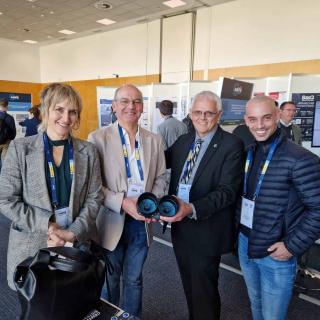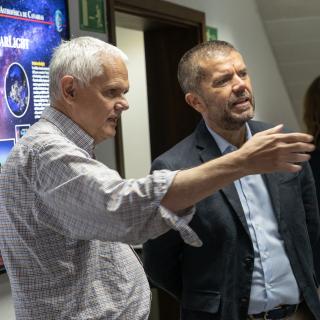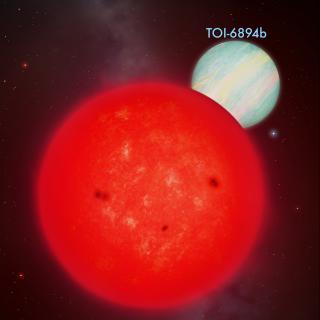It may interest you
-
 A delegation from the Instituto de Astrofísica de Canarias (IAC), led by its Director, Valentín Martínez Pillet, is attending the Big Science Industry Forum Spain 2025 (BSIFS2025), the main national meeting dedicated to the Big Science Industry, on 3 and 4 December. The team is presenting the centre’s scientific and technological advances and strengthening strategic links with companies, technology centres and international scientific infrastructures. The IAC strengthens its presence at Spain’s largest Big Science Industry forum The Big Science Industry Forum Spain 2025, organised by CDTIAdvertised on
A delegation from the Instituto de Astrofísica de Canarias (IAC), led by its Director, Valentín Martínez Pillet, is attending the Big Science Industry Forum Spain 2025 (BSIFS2025), the main national meeting dedicated to the Big Science Industry, on 3 and 4 December. The team is presenting the centre’s scientific and technological advances and strengthening strategic links with companies, technology centres and international scientific infrastructures. The IAC strengthens its presence at Spain’s largest Big Science Industry forum The Big Science Industry Forum Spain 2025, organised by CDTIAdvertised on -
 Una delegación de la Universidad de La Laguna (ULL), encabezada por el rector Francisco García, ha realizado una visita institucional al Instituto de Astrofísica de Canarias (IAC), reforzando así el compromiso de colaboración y la estrecha relación que mantienen ambas instituciones, claves para el desarrollo científico y tecnológico de Canarias. El encuentro ha servido para revisar el estado del convenio que mantienen ambas instituciones y revisar algunas áreas de mejora para la renovación del mismo en materia de investigación, docencia y divulgación científica, además de aspectosAdvertised on
Una delegación de la Universidad de La Laguna (ULL), encabezada por el rector Francisco García, ha realizado una visita institucional al Instituto de Astrofísica de Canarias (IAC), reforzando así el compromiso de colaboración y la estrecha relación que mantienen ambas instituciones, claves para el desarrollo científico y tecnológico de Canarias. El encuentro ha servido para revisar el estado del convenio que mantienen ambas instituciones y revisar algunas áreas de mejora para la renovación del mismo en materia de investigación, docencia y divulgación científica, además de aspectosAdvertised on -
 An international team of astronomers, including researchers from the Instituto de Astrofísica de Canarias (IAC), the University of Liège and collaborators in UK, Chile, the USA, and Europe, has discovered a transiting giant planet orbiting the smallest known star to host such a companion — a finding that defies current theories of planet formation. The host star, TOI-6894 , is a red dwarf with only 20% the mass of the Sun , typical of the most common stars in our galaxy. Until now, such low-mass stars were not thought capable of forming or retaining giant planets. But as published today inAdvertised on
An international team of astronomers, including researchers from the Instituto de Astrofísica de Canarias (IAC), the University of Liège and collaborators in UK, Chile, the USA, and Europe, has discovered a transiting giant planet orbiting the smallest known star to host such a companion — a finding that defies current theories of planet formation. The host star, TOI-6894 , is a red dwarf with only 20% the mass of the Sun , typical of the most common stars in our galaxy. Until now, such low-mass stars were not thought capable of forming or retaining giant planets. But as published today inAdvertised on
